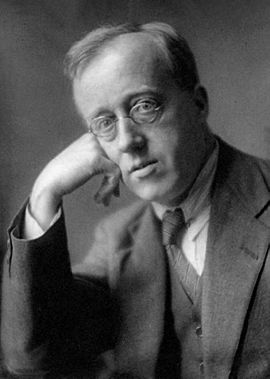This Have I Done for My True Love facts for kids
"This Have I Done for My True Love", or "Tomorrow Shall Be My Dancing Day", Op. 34, no. 1 [H128], is a motet or part song composed in 1916 by Gustav Holst. The words are taken from an ancient carol, and the music is so strongly influenced by English folk music that it has sometimes been mistaken for a traditional folk song itself. It has often been described as a small masterpiece.
Composition
In 1916 Holst was living in a country cottage two miles south of Thaxted in Essex. There he became aware of the ancient Cornish carol "Tomorrow Shall Be My Dancing Day" thanks to the town's vicar, Conrad Noel, who, having come across it in an 1833 collection edited by William Sandys, copied out the words and pinned them up in church. Thinking the carol's traditional tune rather uninspiring, Holst produced his own setting for mixed choir, which, though it betrays the contrapuntal and harmonic influence of the English madrigalists, uses a modal melody so redolent of folksong that it was frequently mistaken for one. He dedicated the work to Noel. The words of the carol present the idea of the redemption of mankind through "the General Dance"; an image which so intrigued Holst that he went on to look for other works connecting dance with worship, and this search soon led to his composing the Hymn of Jesus.
First performances
The work was first performed at Thaxted parish church on 19 May 1918, conducted by Holst. The first London performance took place at the Aeolian Hall on 23 December 1919, the choir being the Oriana Madrigal Society conducted by Charles Kennedy Scott.
See also
- List of compositions by Gustav Holst


